
ASN Wikibase Occurrence # 74420
This information is added by users of ASN. Neither ASN nor the Flight Safety Foundation are responsible for the completeness or correctness of this information.
If you feel this information is incomplete or incorrect, you can submit corrected information.
| Date: | Thursday 16 August 2001 |
| Time: | 10:00 |
| Type: |  Lockheed C-5A Galaxy |
| Owner/operator: | United States Air Force (USAF) |
| Registration: | 70-0461 |
| MSN: | 500-0075 |
| Year of manufacture: | 1973 |
| Fatalities: | Fatalities: 0 / Occupants: 39 |
| Aircraft damage: | Substantial |
| Location: | Travis AFB, CA (SUU) -
 United States of America United States of America
|
| Phase: | Take off |
| Nature: | Military |
| Departure airport: | KSUU |
| KDOV | |
| Confidence Rating: |
The C-5A Galaxy, operating for the 436th AW, was attempting to depart from Travis AFB, CA (KSUU) on runway 21L the morning of 16 Aug 2001 for the flight to Dover AFB, DE (KDOV). During the takeoff roll, at an approximate speed of 102 knots (rotation speed would have occurred at 118 knots) the aircraft experienced a complete structural failure of the nose landing gear strut. The aircraft's 2-ton nose landing gear assembly explosively separated from the airplane, accelerating parts more than 60 feet in the air and damaging the number two engine. The separated 4-wheeled, nose landing gear inflicted severe damage to the aircraft as it smashed into the left main landing gear, severed hydraulic lines and caused the aircraft to veer sharply left. The crew applied corrective actions to keep the aircraft on the runway using a combination of differential braking and application of flight control inputs and aborted the take off. The crew of 12 then preformed an orderly evacuation of the 27 passengers, mostly military retirees and their families, without further incident.
Post flight inspection of the aircraft revealed a destroyed number two engine caused by foreign object damage from the exploded nose landing gear strut, damage to 5-6 of the main landing gear tires, a loss of three of the four aircraft hydraulic systems, and major sheet metal and structural damage to the underside of the fuselage.
Probable Cause: The nose landing gear strut exploded due to improper nitrogen servicing during pre-flight activities at Travis AFB, CA the morning of the flight, which resulted in an over-pressurization of the nose landing gear strut.
Sources:
Personal knowledge of the aircraft (C-5A, tail # 70-0461), that experienced this particular incident on 16 August 2001 at Travis AFB, CA.
Images:
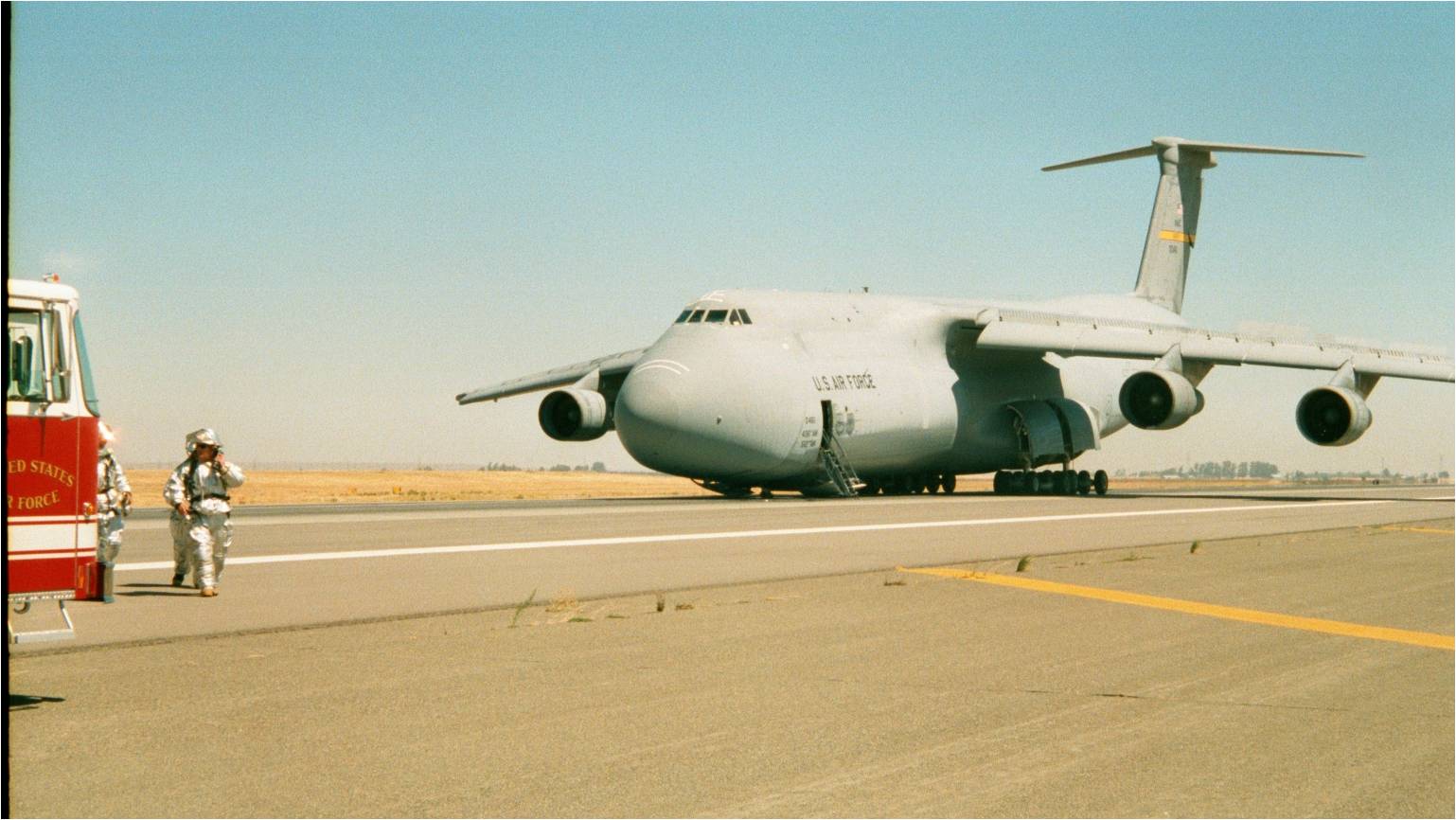
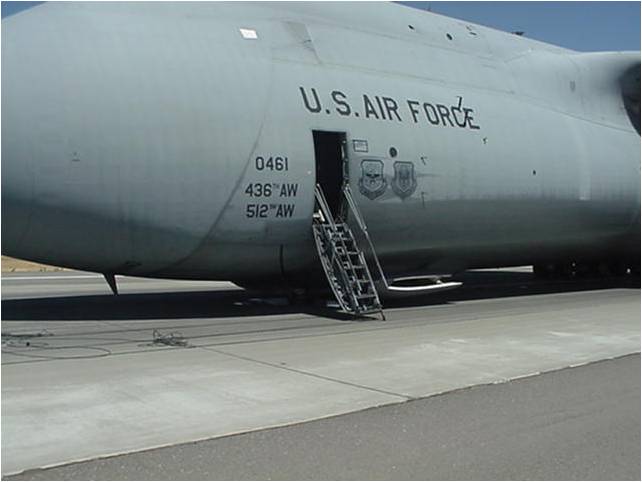




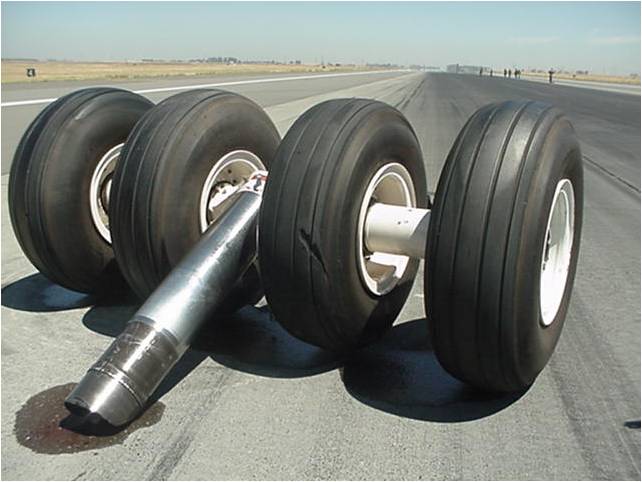
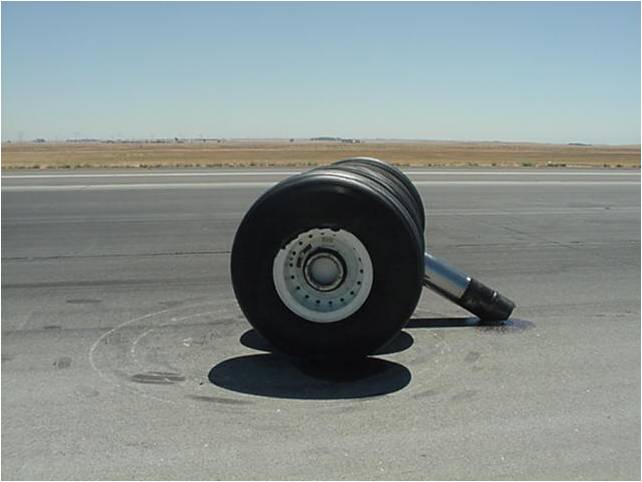

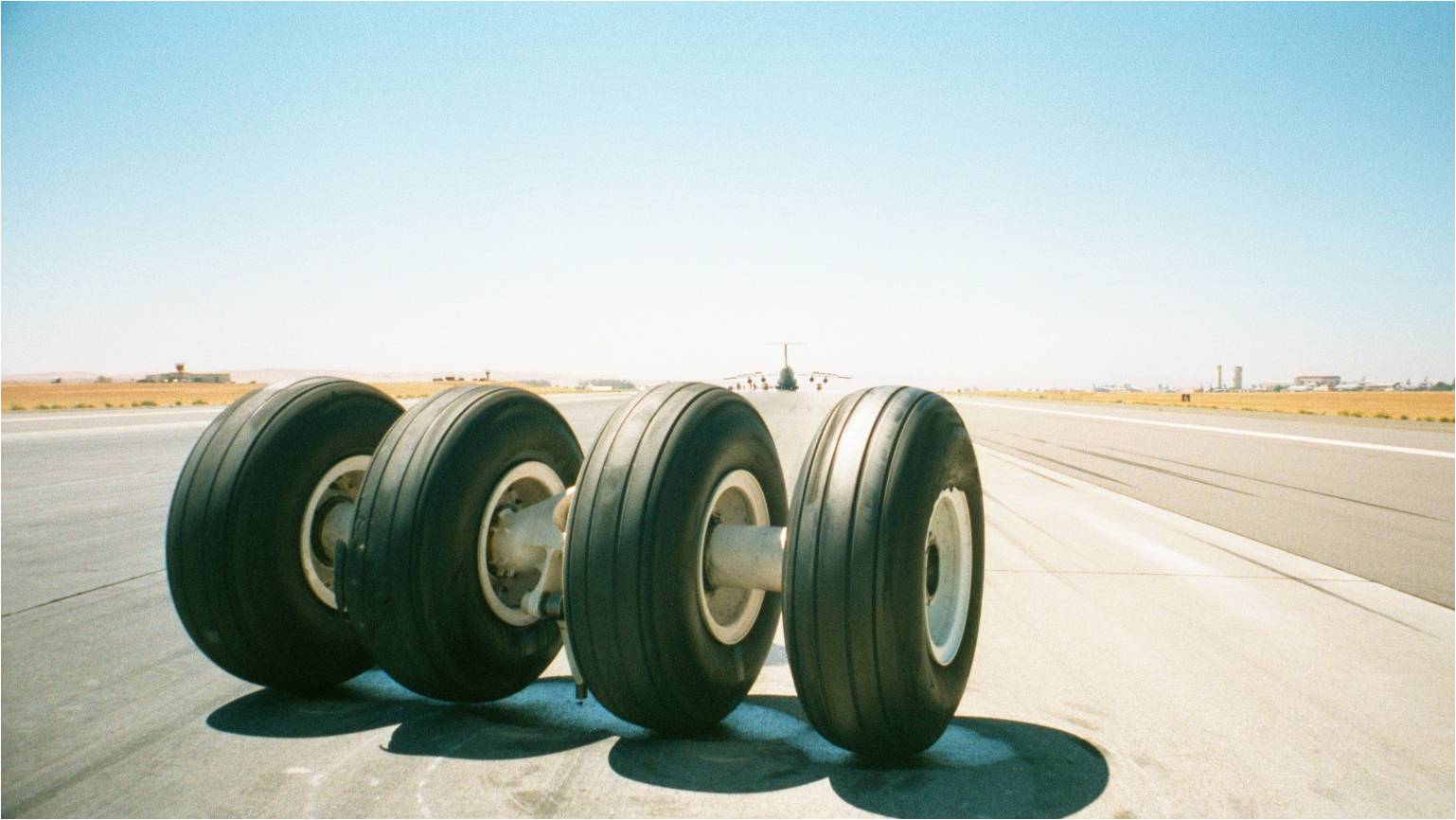
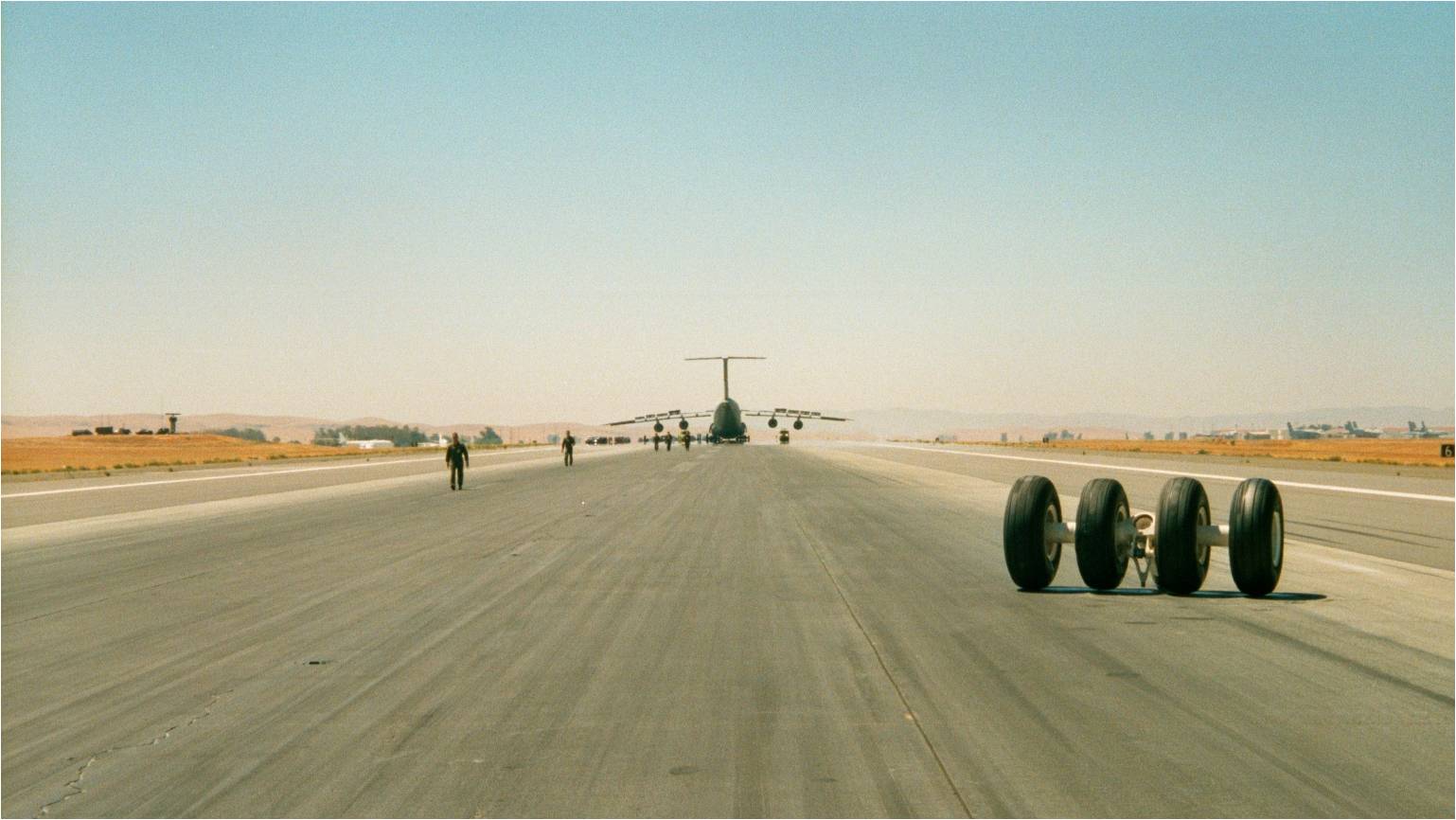
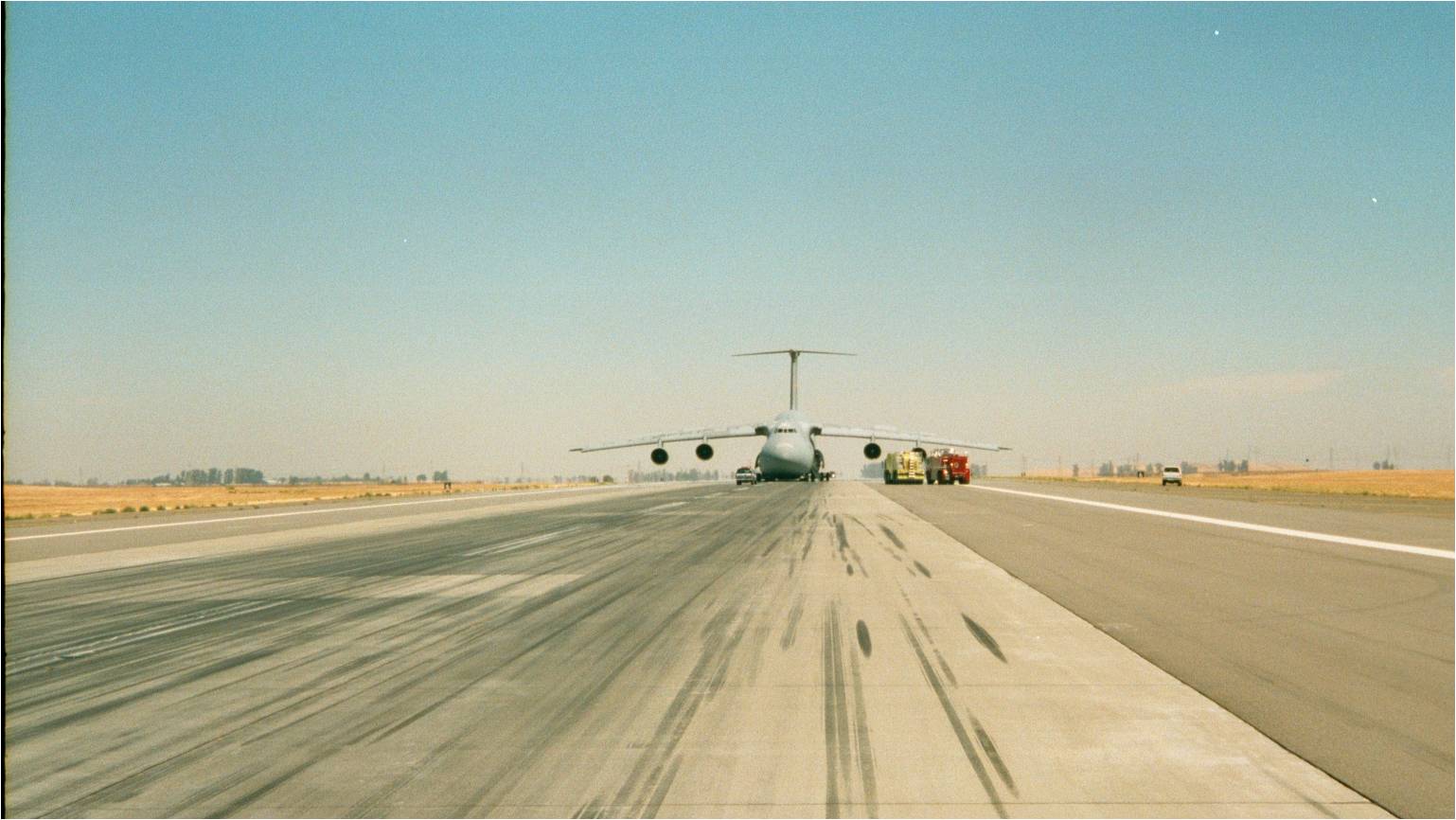
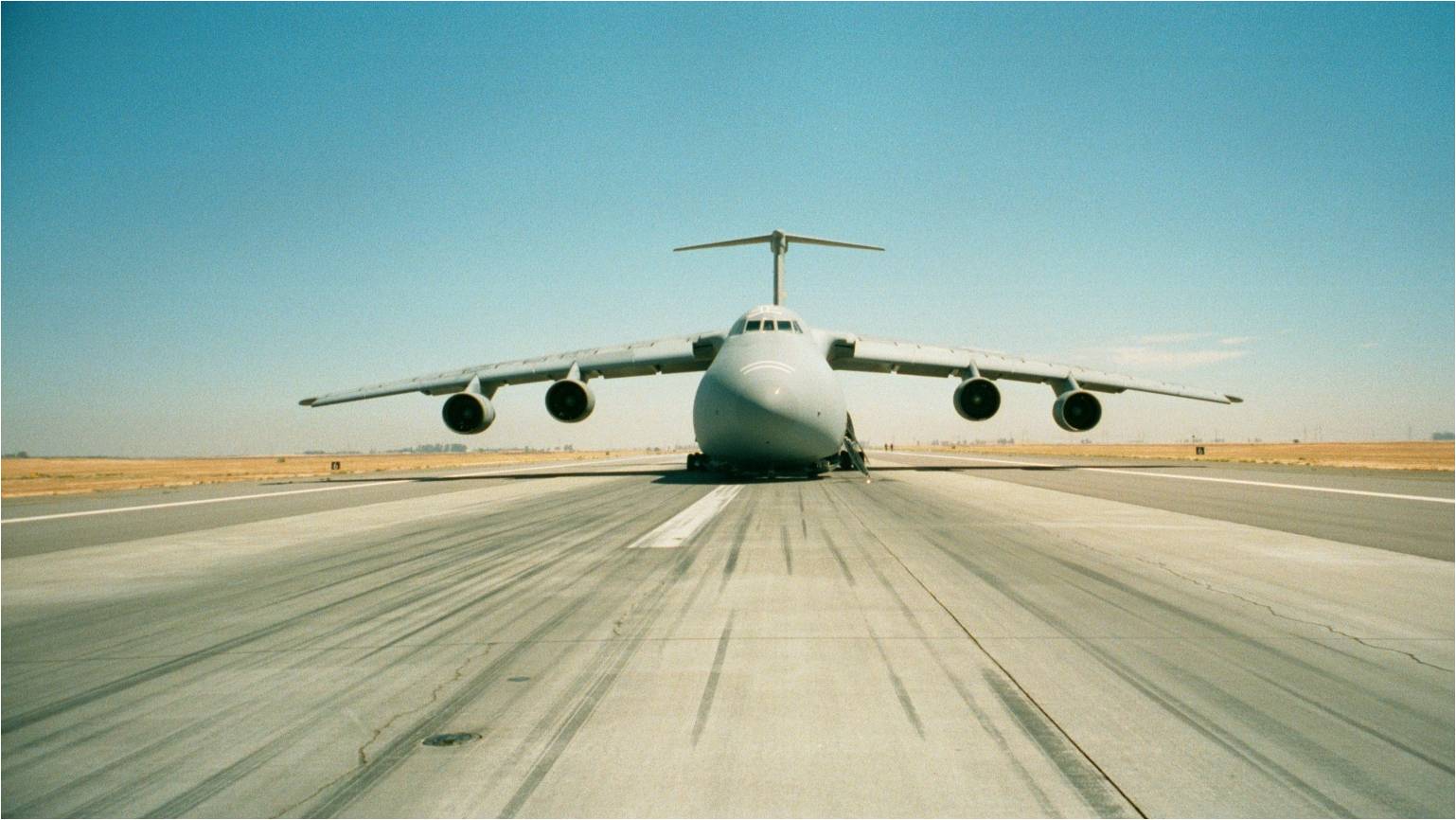
Revision history:
| Date/time | Contributor | Updates |
|---|---|---|
| 20-May-2010 12:39 | will8a | Added |
| 20-May-2010 21:34 | Anon. | Updated [Source] |
| 20-May-2010 21:35 | Anon. | Updated [Source] |
| 20-May-2010 21:35 | Anon. | Updated [[Source]] |
| 20-May-2010 21:35 | Anon. | Updated [[[Source]]] |
| 20-May-2010 21:35 | Anon. | Updated [[[[Source]]]] |
| 20-May-2010 21:35 | Anon. | Updated [[[[[Source]]]]] |
| 20-May-2010 21:35 | Anon. | Updated [[[[[[Source]]]]]] |
| 20-May-2010 21:35 | Anon. | Updated [[[[[[[Source]]]]]]] |
| 20-May-2010 21:35 | Anon. | Updated [[[[[[[[Source]]]]]]]] |
| 20-May-2010 21:35 | Anon. | Updated [[[[[[[[[Source]]]]]]]]] |
| 20-May-2010 21:35 | Anon. | Updated [[[[[[[[[[Source]]]]]]]]]] |
| 20-May-2010 21:35 | Anon. | Updated [[[[[[[[[[[Source]]]]]]]]]]] |
| 20-May-2010 21:36 | Anon. | Updated [[[[[[[[[[[[Source]]]]]]]]]]]] |
| 20-May-2010 21:36 | Anon. | Updated [[[[[[[[[[[[[Source]]]]]]]]]]]]] |
| 20-May-2010 21:36 | Anon. | Updated [Source, Narrative] |
| 21-May-2010 06:03 | Anon. | Updated [Time, Narrative] |
| 15-Feb-2017 14:19 | TB | Updated [Time, Cn, Operator, Narrative] |
| 15-Feb-2017 14:22 | TB | Updated [Location] |
Corrections or additions? ... Edit this accident description
The Aviation Safety Network is an exclusive service provided by:


 ©2024 Flight Safety Foundation
©2024 Flight Safety Foundation